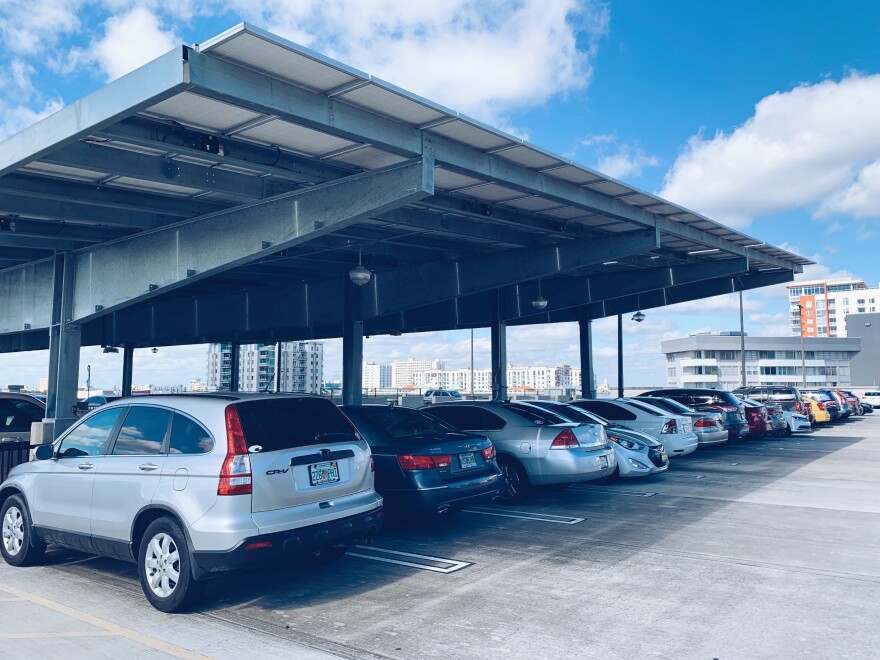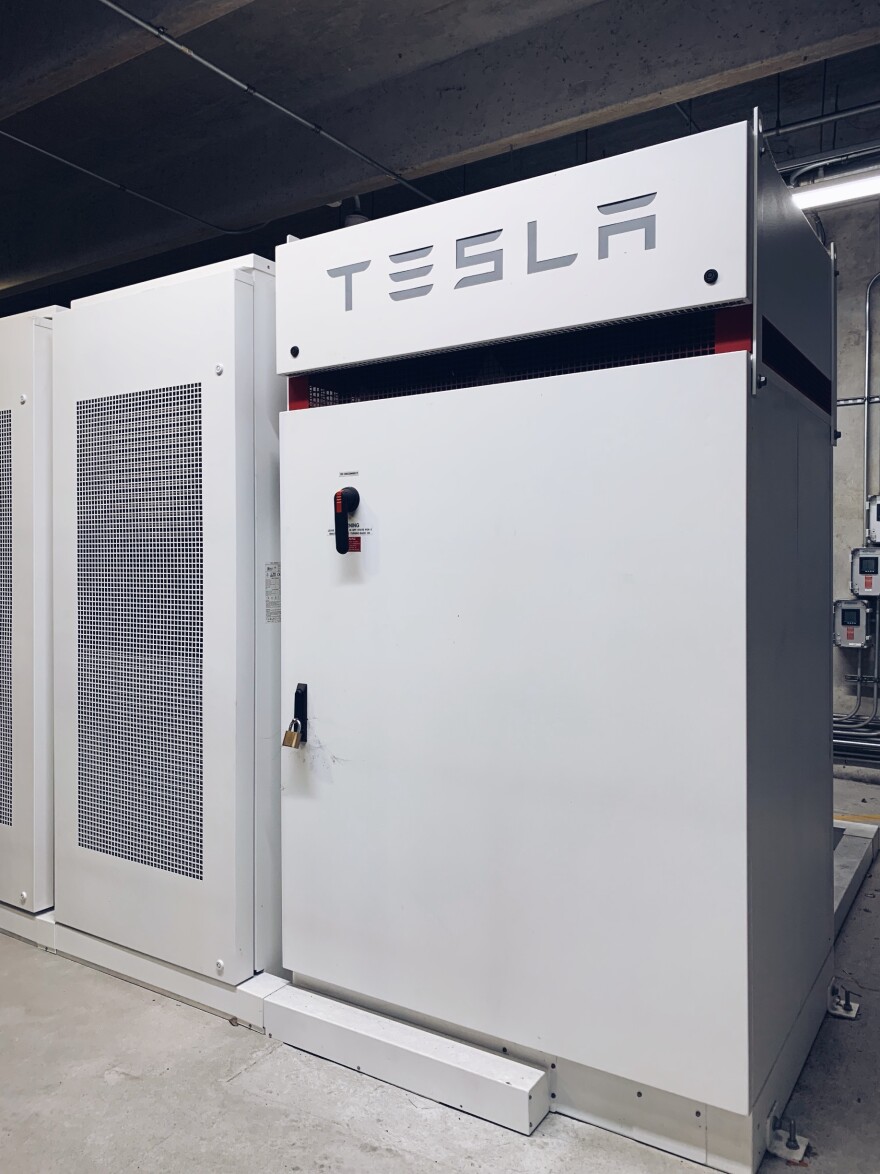As USF St. Petersburg works to set new sustainability standards, the campus continues to implement eco-friendly projects.
In 2016, USFSP adopted a Climate Action Plan and pledged to achieve two goals: to reduce its baseline greenhouse gas emissions by 50 percent by 2035 and to achieve carbon neutrality by 2050.
Edward Lewis is the campus' facilities planning and construction manager.
“The plan is a guide," Lewis said. "It’s a set of targets to reach with dates against them and if you don’t have that, you won’t go forward.”
Lewis uses a greenhouse gas baseline inventory tool that is updated every year to track campus emissions.
The majority of USFSPs carbon dioxide (CO2) emissions come from electricity, transportation and waste. In order to achieve the goal of carbon neutrality, USFSP is focusing on strategies that would reduce those emissions, both directly and indirectly.

That includes cutting electricity consumption in half, diverting recyclables from municipal solid waste and adding an additional 500 kW of renewable solar energy.
To plan and implement the sustainable projects, the university has partnered with the City of St. Petersburg and Duke Energy. The student body is another main contributor.
“They’re good partners,” said Lewis. “They’re always willing and when they’re able to, help and get involved in things.”
Funding sustainable projects
The Student Green Energy Fund (SGEF) is a student-led group that provides project funding through a $1 per credit hour fee.
“Not only does the Student Green Energy Fund help meet those goals of sustainability across our campus, but our sustainability program, other clubs on campus and faculty and staff members help us meet those climate action goals and bring sustainability forward,” said Andrea Rodriguez Campos, chair of the SGEF.
So far, the university has completed a number of successful eco-friendly projects, ranging from LED lighting and ceramic window film installations to water refill stations that reduce single-use plastic bottles.
Some of USFSP's bigger projects are located in the Fifth Avenue parking garage. On the top floor of the garage is a 7,100-square-foot solar array canopy. It’s a 100-kW array comprised of 318 solar photovoltaic panels that has so far saved more than 325,000 kilograms of CO2 emissions.
“It’s powered by our sunny Florida weather and takes in all that energy which powers the entire parking garage,” said Campos.
On the first floor of the garage is a Tesla Battery Solar Storage System with the ability to store 250-kW of renewable energy.
“It powers the entire parking garage including LED lights, the electric vehicle charging stations, security camera and elevators, and it sends unused energy back to the power grid for usage,” said Emma Jacobs, vice chair of the SGEF.
The SGEF provided about $350,000 for the project, while Duke Energy contributed a $1 million grant.
“Duke Energy has been a great partner with USF St. Petersburg in unveiling this project as well as contributing to our sustainability goals on campus,” said Jacobs.
Also on the first floor of the parking garage is an energy submetering and monitoring kiosk. The digital and interactive system allows faculty and students to scroll through a variety of pages, icons and photos to see real-time data of energy usage in the garage.
The three projects in the garage work simultaneously to provide, store and monitor renewable energy.
Green rankings
USFSP is also a member of the Association for the Advancement of Sustainability in Higher Education, AASHE. Additionally, it’s a participant in their STARS program which allows colleges and universities to report and measure their sustainability performance.
Institutions are scored within four categories: Academics, Engagement, Operations and Planning & Administration. Based on their reporting, institutions are scored and may rank anywhere from bronze to platinum.
The chart below represents all of the universities participating in the STARS system along with their score and rank. USFSP has a silver ranking with a score of 53.46.

Due to USFSP's sustainable accomplishments, they have also received a variety of certifications -- most notably, the Leadership in Energy and Environmental Design, or LEED, platinum certification for the Warehouse Laboratory building. It’s the fourth structure on campus to achieve one of the most popular green building awards.
“It’s the ultimate sustainable building. It already had a previous use. It was a repair station for the Greyhound bus company,” said Lewis. “So instead of knocking it down which is the usual trend, we decided to adapt to it, we modernized it, we brought it up to code.”
The building has a variety of green features:
- Water use reduction
- Water efficient landscaping
- Construction pollution reduction
- Storage and collection of recyclables
- 20 percent recycled content used in building materials
- 20 percent of Materials used came from within 500 miles of USFSP
- Low-Emitting Materials reduces indoor air contaminants
- Open space promoting biodiversity
- Environmental Tobacco Smoke Control
USFSP will continue to renovate buildings to LEED standards. In the works for 2019 is the new Student Residence Hall. Lewis said these projects say a lot about USFSP’s efforts towards sustainability.
“We’re progressive, we care most importantly and we want to do something about it,” said Lewis.



Copyright 2019 WUSF Public Media - WUSF 89.7

